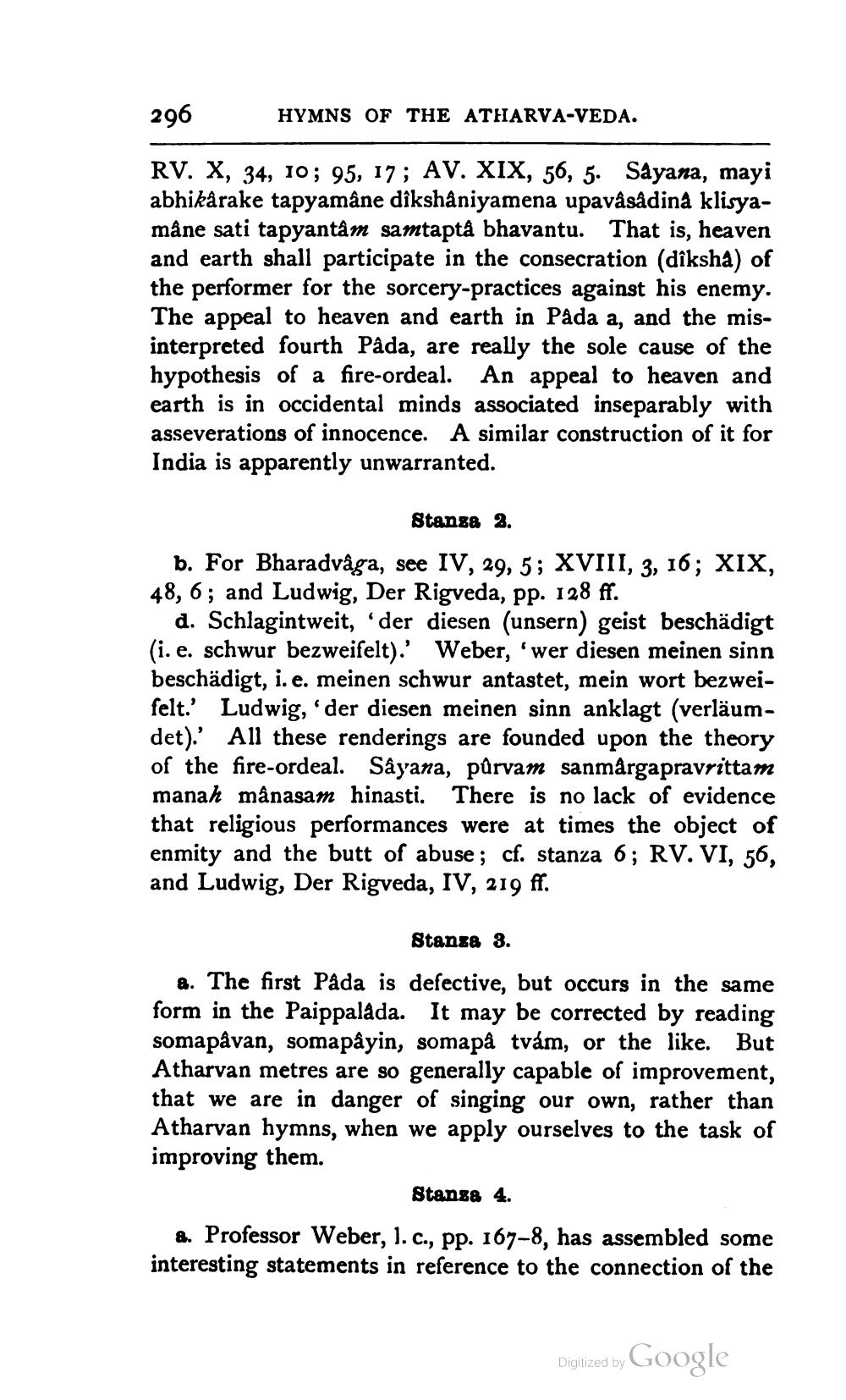________________
296
HYMNS OF THE ATHARVA-VEDA.
RV. X, 34, 10; 95, 17; AV. XIX, 56, 5. Sayana, mayi abhikârake tapyamâne dikshåniyamena upavâsâdina klisyamâne sati tapyantâm samtapta bhavantu. That is, heaven and earth shall participate in the consecration (dîksha) of the performer for the sorcery-practices against his enemy. The appeal to heaven and earth in Påda a, and the misinterpreted fourth Pâda, are really the sole cause of the hypothesis of a fire-ordeal. An appeal to heaven and earth is in occidental minds associated inseparably with asseverations of innocence. A similar construction of it for India is apparently unwarranted.
Stansa 2. b. For Bharadvåga, see IV, 29, 5; XVIII, 3, 16; XIX, 48, 6; and Ludwig, Der Rigveda, pp. 128 ff.
d. Schlagintweit, der diesen (unsern) geist beschädigt (i.e. schwur bezweifelt).' Weber, 'wer diesen meinen sinn beschädigt, i.e. meinen schwur antastet, mein wort bezweifelt.' Ludwig, der diesen meinen sinn anklagt (verläumdet).' All these renderings are founded upon the theory of the fire-ordeal. Sayana, pūrvam sanmärgapravrittam manah mânasam hinasti. There is no lack of evidence that religious performances were at times the object of enmity and the butt of abuse; cf. stanza 6; RV. VI, 56, and Ludwig, Der Rigveda, IV, 219 ff.
Stanza 3. a. The first Påda is defective, but occurs in the same form in the Paippalada. It may be corrected by reading somapävan, somapâyin, somapå tvám, or the like. But Atharvan metres are so generally capable of improvement, that we are in danger of singing our own, rather than Atharvan hymns, when we apply ourselves to the task of improving them.
Stanga 4.
a. Professor Weber, 1. c., pp. 167-8, has assembled some interesting statements in reference to the connection of the
Digitized by Google




